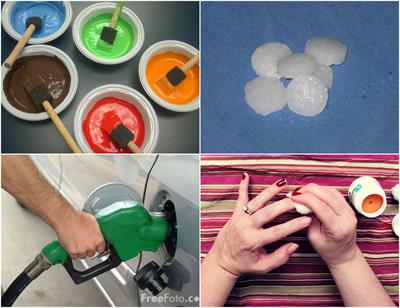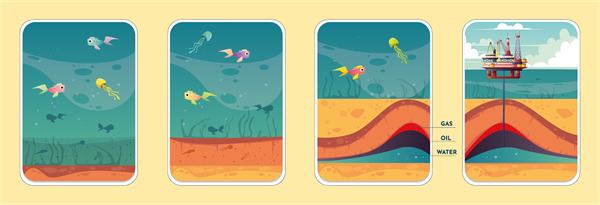PDF chapter test TRY NOW
Everything that we come across in our environment contains chemistry. It is in the air we breathe, the food we consume and everything we use every day. Even our body is made up of elements such as nitrogen, phosphorous, hydrogen, oxygen, calcium, potassium, sulphur and magnesium, etc. Chemistry is important for all chemical reactions in our bodies.

Chemistry in daily life
Look at all of the pictures above. Each one shows an item that you might have used or seen used by someone else. There is one thing that all of these pictures have in common. Are you able to figure out what it is? They are all made up of hydrocarbons, which are carbon compounds.
Hydrocarbons
Organic compounds composed of hydrogen and carbon atoms are known as Hydrocarbons. They are combustible and produce a lot of heat energy, as well as carbon dioxide, and water vapour when they are burned. As a result, a large number of hydrocarbons are used as fuels.
Table of content
- Source
- Properties
- Types
- Uses
Source of hydrocarbon:
Hydrocarbons are naturally occurring compounds found in fossil fuels such as crude oil, natural gas and coal. Dead plants and animals were buried on the ocean floor some \(300\) million years ago. They were gradually covered by silt and soil layers. Then they were buried deep down, compressed by temperature and pressure and converted to fossil fuels like oil and natural gas. These fuels are found in porous rocks which lie below large bodies of water, especially oceans. Hydrocarbons can be extracted by drilling these rocks. Hydrocarbons can also be found in various trees and plants.

Formation of hydrocarbons
Properties:
- The majority of hydrocarbons are water-insoluble.
- As hydrocarbons have a lower density than water, they float over water.
- Most hydrocarbons react with oxygen to produce carbon dioxide and water.
- Hydrocarbons occur in gases, liquids or waxes.
Examples:
Liquid: Hexane, benzene
Gas: Methane, propane
Wax: Paraffin
Gas: Methane, propane
Wax: Paraffin
- Hydrocarbons can form bonds with other hydrocarbons. This property is known
as Catenation (chain formation). Due to this property, they form more number of
complex molecules.
Reference:
https://th.bing.com/th/id/R.f4456fcefba009af2adc5e356dfbea19?rik=2rdBOSlLesUklw&riu=http%3a%2f%2fwww.freefoto.com%2fimages%2f13%2f50%2f13_50_2---Filling-up-with-Petrol_web.jpg&ehk=VzY7PfzbtcA2Ibi678JPcxAdWbpYCcX9wPpPzMudeB0%3d&risl=&pid=ImgRaw&r=0
https://th.bing.com/th/id/OIP.lo5dc_4bdpn3JhSzD30SNwHaFj?w=225&h=180&c=7&o=5&pid=1.7
https://th.bing.com/th/id/OIP.1oCfKJBFGw80X5CuEvX2CgHaEK?w=280&h=180&c=7&o=5&pid=1.7
https://live.staticflickr.com/2624/3747031871_b7528d5620_b.jpg
